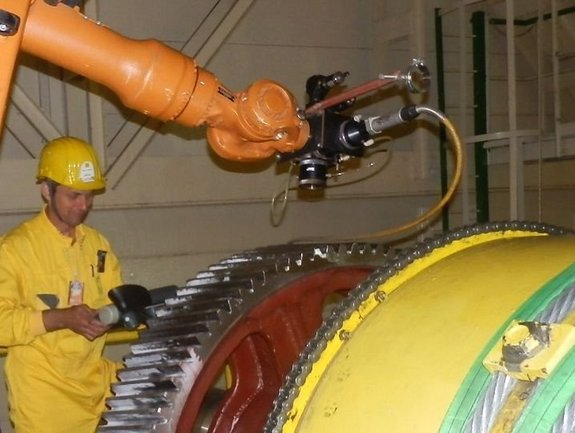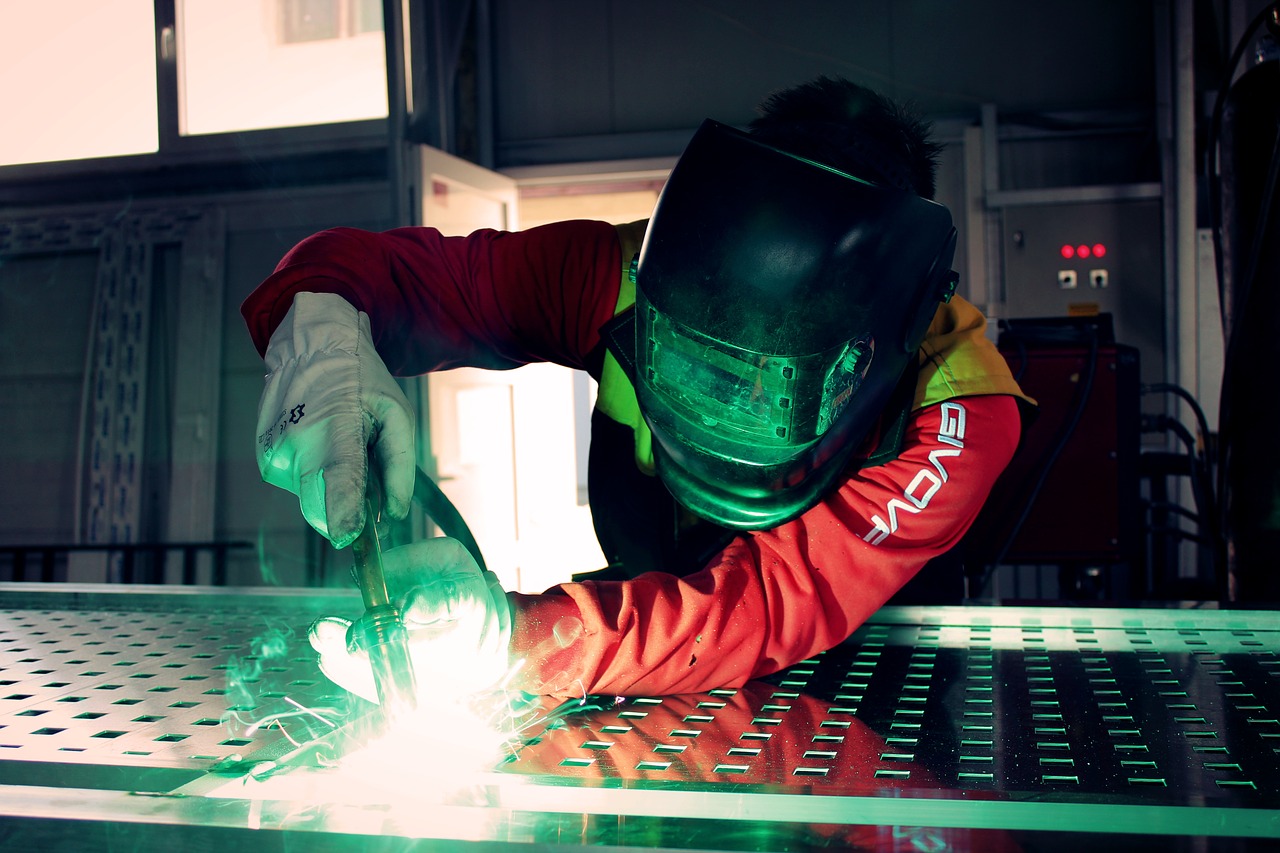Everything about Welding: Secret Insights Into Techniques and Best Practices for Success
Welding encompasses a selection of methods, each fit for details products and applications. Recognizing these techniques, such as GMAW, SMAW, and TIG, is crucial for accomplishing perfect results. The appropriate tools and security techniques can not be overlooked. As prep work and troubleshooting play important functions in the welding process, grasping these elements can considerably improve the top quality of the last item. What are the vital factors that assure an effective weld?
Recognizing Different Welding Strategies
Welding techniques include a variety of approaches, each matched to particular applications and products. Among one of the most usual techniques are Gas Metal Arc Welding (GMAW), Protected Metal Arc Welding (SMAW), and Tungsten Inert Gas Welding (TIG) GMAW, additionally referred to as MIG welding, is prominent for its rate and versatility, making it optimal for slim products. SMAW, or stick welding, is preferred for its simpleness and efficiency in outdoor settings, specifically with thicker steels. TIG welding supplies accuracy and control, making it appropriate for intricate job and non-ferrous steels (Montana Mobile Welding and Repair Belgrade). Each strategy has its one-of-a-kind benefits and considerations, permitting welders to pick the very best method based on the task's needs, material kind, and desired end results. Understanding these strategies is crucial for successful welding
Vital Welding Equipment and Devices
While various welding techniques need specific abilities, the ideal tools and devices are just as important for attaining top quality outcomes. Essential welding devices consists of welding makers, which differ depending upon the method-- such as MIG, TIG, or stick welding. Protective equipment, including handwear covers, safety helmets, and aprons, guarantees security and convenience throughout the process. In enhancement, components and clamps aid secure products in position, making sure precision in welds. Consumables like welding poles, wire, and securing gas are likewise crucial components that affect the top quality of the weld. Devices such as cutters and mills help with surface area preparation and post-weld completing, adding to an expert result. Buying top notch tools inevitably boosts the effectiveness and performance of welding jobs.
Safety Practices in Welding
Correct safety techniques are vital in the welding industry to shield workers from possible threats. Welders should put on proper personal safety tools (PPE), including safety helmets with proper shading, handwear covers, and flame-resistant clothes. Sufficient ventilation is important to minimize exposure to hazardous fumes and gases generated during the welding procedure. In addition, employees must be trained in the right handling of welding devices to avoid mishaps. Fire safety and security steps, such as keeping combustible products far from the welding location and having fire extinguishers readily available, are essential. Normal inspections of devices and work spaces can aid recognize potential threats prior to they result in mishaps. By adhering to these safety and security techniques, welders can develop a more secure working environment and lessen dangers linked with their trade.
Preparing Products for Welding
Preparing materials for welding is an essential step that considerably affects the quality and integrity of the last product (Montana Mobile Welding and Repair Belgrade Welding). Proper prep work involves cleansing the surfaces to eliminate pollutants such as dust, rust, and oil, which can endanger the weld. Strategies such as grinding, sanding, or making use of solvents are commonly utilized to achieve a tidy surface. Furthermore, making sure that the materials mesh snugly is essential; gaps can cause weak welds. It's additionally essential to consider the positioning and positioning of the elements, as this will impact the ease of welding and the final result. Ultimately, choosing the appropriate filler product and guaranteeing compatibility with the base metals is necessary for achieving strong, long lasting welds
Tips for Getting High-Quality Welds
Attaining premium welds calls for interest to detail and adherence to finest methods throughout the welding procedure. Proper joint prep work is crucial, making certain surfaces are clean and complimentary from impurities. Picking the appropriate filler material and welding strategy based upon the base steels is crucial for perfect bonding. Keeping constant traveling speed and angle while welding can advertise and stop defects harmony. Furthermore, managing warm input is essential; excessive warmth can lead to bending and weakened joints. On a regular basis inspecting the welds during the procedure allows for immediate adjustments if essential. Lastly, employing proper post-weld treatments, such as cleansing and stress and anxiety relief, can improve the sturdiness and integrity of the weld, inevitably making certain an effective result.
Troubleshooting Usual Welding Issues
Welding frequently presents challenges that can affect the top quality and stability of the last product. Typical concerns such as porosity, inconsistent weld beads, and overheating can arise, each calling for certain troubleshooting strategies. Recognizing these issues is necessary for welders to improve their skills and achieve ideal outcomes.
Porosity Problems Explained
Porosity can typically be overlooked, it continues to be an important problem in welding that can compromise the stability of a finished item. Porosity describes the visibility of little gas pockets within the weld bead, which can compromise the joint and lead to premature failing. This problem generally develops from pollutants, dampness, or incorrect protecting weldable gas coverage during the welding procedure. To alleviate porosity, welders need to validate that the base products are completely dry and tidy, make use of ideal protecting gases, and preserve regular welding parameters. Regularly checking the tools and setting can likewise aid recognize possible issues before they show up in the weld. Attending to porosity efficiently is essential for achieving solid, resilient welds that satisfy top quality criteria.

Irregular Weld Beans
Inconsistent weld grains can significantly influence the top quality and stamina of a completed item. Different variables add to this problem, including improper traveling speed, wrong amperage settings, and inconsistent electrode angles. When the welder relocates as well quickly, a bead may show up slim and do not have penetration, while relocating also slowly can create extreme build-up. In addition, utilizing the incorrect amperage can lead to either damaging or extreme spatter, both of which concession weld integrity. The welder's method, such as inconsistent lantern activity, can additionally cause uneven bead appearance. To minimize these issues, welders need to focus on preserving consistent, regulated activities and ensuring appropriate equipment setups to attain harmony in their welds. Uniformity is vital to achieving dependable and solid welds.
Overheating and Bending Issues
Extreme heat during the welding process can bring about significant overheating and contorting concerns, influencing the architectural honesty of the workpiece. These issues often manifest as distortion, which can compromise alignment and fit-up, making more setting up testing. Variables adding to overheating consist of the option of welding specifications, such as voltage and travel rate, along with the kind of material being welded. To minimize these concerns, welders ought to preserve constant traveling rate and suitable warmth input while checking the workpiece temperature level. Additionally, preheating or post-weld heat treatment can aid reduce stresses brought on by fast cooling - Welding. Normal evaluation and adherence to best methods are essential in protecting against getting too hot and making certain the longevity and integrity of bonded frameworks
Frequently Asked Inquiries
What Are the Occupation Opportunities in the Welding Industry?
The welding industry supplies diverse job chances, consisting of settings as welders, engineers, assessors, and instructors. Specialists can operate in manufacturing, building, aerospace, and vehicle sectors, profiting from blog solid demand and affordable wages in different roles.
Exactly How Can I Boost My Welding Rate Without Compromising Quality?
To boost welding speed without sacrificing high quality, one must exercise efficient methods, keep equipment, optimize settings, and improve hand-eye coordination. Normal training and looking for feedback can additionally greatly add to attaining much faster, premium welds.
What Accreditations Are Available for Welders?
Various qualifications exist for welders, including those from the American Welding Society (AWS), the National Facility for Building And Construction Education and Study (NCCER), and different industry-specific companies. These credentials boost employability and demonstrate ability effectiveness.
Exactly How Does Welding Affect the Qualities of Metals?
Welding affects the buildings of steels by changing their microstructure, which can bring about adjustments in ductility, solidity, and stamina. Heat input and cooling prices throughout the procedure greatly impact these material features.
Can I Weld Dissimilar Metals With Each Other?
